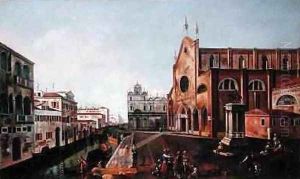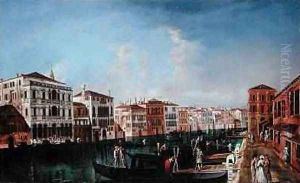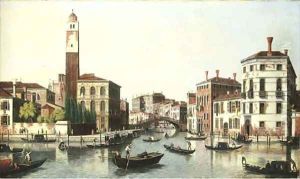(follower of) Marieschi, Michele Paintings
Michele Marieschi, an Italian artist, was known for his vedute, or detailed paintings and prints of cityscapes, particularly those of Venice. Born in 1710 in Venice, he initially began his artistic career not as a painter but as an engraver and etcher, having apprenticed under a German printmaker. However, it was painting that eventually brought him fame.
Marieschi's style was greatly influenced by other Venetian vedutisti, such as Luca Carlevarijs and, more significantly, Antonio Canaletto and Giovanni Battista Tiepolo. Although his work was sometimes confused with or overshadowed by Canaletto's, Marieschi offered a distinct approach to perspective and atmosphere in his depictions of the Venetian landscape and architecture.
After a short period spent in Germany, Marieschi returned to Venice where he concentrated on painting. His works from this period are characterized by their accurate representation of Venice’s architecture and daily life, executed with a remarkable attention to detail and a bold use of color. He produced a notable series of vedute that were engraved and published in a collection titled 'Magnificentiores selectioresque urbis Venetiarum prospectus' (The most magnificent and select views of the city of Venice), which contributed to his fame.
Unfortunately, Marieschi's career was cut short by his premature death in 1743, at the relatively young age of 33. Although his body of work is not as extensive as some of his contemporaries, his contribution to the genre of vedute is significant. Today, his works are held in various museums and collections around the world and are studied for their unique portrayal of 18th century Venice.


